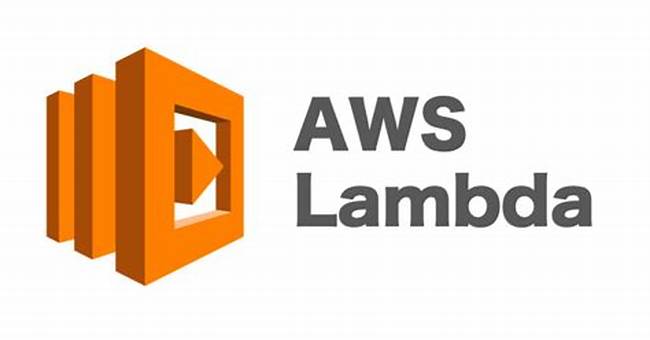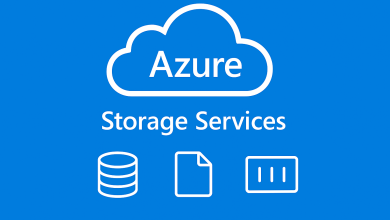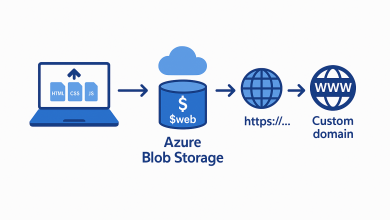AWS Lambda: Serverless Computing for Scalable Applications

Introduction
Cloud computing has transformed how businesses build and deploy applications, with AWS (Amazon Web Services) leading the way in providing scalable and cost-effective solutions. One of the most powerful services within AWS is AWS Lambda, a serverless computing platform that enables developers to run code without provisioning or managing servers. In this article, we will explore AWS Lambda, its benefits, use cases, best practices, and how it compares to traditional cloud computing approaches.
What is AWS Lambda?
AWS Lambda is a serverless compute service that runs code in response to events and automatically manages the underlying infrastructure. With Lambda, you simply upload your code, and AWS takes care of execution, scaling, and maintenance.
Key Features of AWS Lambda:
- Event-driven execution: Runs in response to triggers such as HTTP requests, database changes, or file uploads.
- Automatic scaling: Scales up and down dynamically based on demand.
- Supports multiple languages: Works with Python, Node.js, Java, Go, C#, and more.
- Pay-per-use pricing: Charges only for the execution time and resources consumed.
- Seamless integration: Works with AWS services like S3, DynamoDB, API Gateway, and CloudWatch.
Benefits of AWS Lambda
- No Server Management: You don’t need to maintain or patch servers; AWS handles all infrastructure-related tasks.
- Cost Efficiency: You pay only for the computing time used, reducing operational expenses.
- High Availability: AWS Lambda automatically manages availability and fault tolerance.
- Scalability: It scales automatically to accommodate workload demands, making it ideal for unpredictable traffic patterns.
- Faster Deployment: Developers can quickly deploy and update functions without downtime.
- Security: AWS provides built-in security, including IAM (Identity and Access Management) permissions and VPC (Virtual Private Cloud) support.
Common Use Cases for AWS Lambda
1. Real-Time File Processing
AWS Lambda is commonly used to process files uploaded to Amazon S3. For example, you can create a function that resizes images, converts file formats, or extracts metadata when new files are uploaded.
2. Web APIs and Backend Services
Using AWS Lambda with Amazon API Gateway allows you to build serverless APIs that handle HTTP requests and interact with databases, authentication services, and other AWS resources.
3. Automated Data Processing
Lambda functions can process real-time data from Amazon Kinesis or DynamoDB streams, making it useful for log analysis, data transformation, and ETL (Extract, Transform, Load) pipelines.
4. IoT Applications
Lambda is ideal for IoT (Internet of Things) applications, where devices send data to AWS services like MQTT or AWS IoT Core, and Lambda processes the data in real time.
5. Security and Compliance Automation
Lambda can monitor and enforce security policies across AWS environments by scanning logs, analyzing permissions, and detecting unauthorized access.
How AWS Lambda Works
- Event Trigger: An event from a supported AWS service (e.g., an S3 file upload) triggers a Lambda function.
- Execution Environment: AWS provisions a runtime environment for executing the function.
- Code Execution: The Lambda function processes the input and performs the defined task.
- Automatic Scaling: AWS scales the function based on demand.
- Logging and Monitoring: AWS CloudWatch captures logs, metrics, and execution details.
AWS Lambda Pricing Model
AWS Lambda follows a pay-per-use pricing model based on:
- Number of requests: $0.20 per 1 million requests.
- Duration: Charged in milliseconds (from invocation to termination).
- Memory and CPU Allocation: Pricing varies based on allocated resources.
- Free Tier: 1 million free requests and 400,000 GB-seconds per month.
Best Practices for AWS Lambda
1. Optimize Function Size
Keep function packages small to improve deployment time and execution speed. Use AWS Lambda Layers for dependencies.
2. Use Environment Variables
Store configuration details, API keys, and secrets using Lambda environment variables instead of hardcoding them.
3. Monitor and Debug with AWS CloudWatch
Enable detailed logging and metrics to track performance and troubleshoot issues.
4. Set Appropriate Timeouts
Define suitable execution timeouts to prevent unnecessary billing for long-running tasks.
5. Secure Lambda Functions
Use IAM roles with the least privilege to control access. Restrict network access using AWS VPC settings.
6. Asynchronous Processing for Performance
For tasks that don’t require immediate responses, use AWS SQS (Simple Queue Service) or SNS (Simple Notification Service) for asynchronous execution.
7. Optimize Cold Starts
Cold starts occur when Lambda initializes a new execution environment. To reduce latency,
- Use Provisioned Concurrency to keep functions warm.
- Choose lighter runtime languages like Node.js or Python.
- Keep function dependencies minimal.
AWS Lambda vs. Traditional Cloud Computing
| Feature | AWS Lambda | Traditional Cloud (EC2, Containers) |
|---|---|---|
| Server Management | Fully managed (serverless) | Requires setup and maintenance |
| Scaling | Auto-scales instantly | Manual or auto-scaling with configurations |
| Pricing | Pay-per-execution | Pay for uptime (even if idle) |
| Deployment | Quick and easy | Requires infrastructure setup |
| Use Cases | Event-driven, microservices, automation | Long-running applications, complex workloads |
Conclusion
AWS Lambda is a game-changer for developers looking to build scalable and cost-efficient applications without worrying about server management. Whether you’re processing data, handling API requests, or automating cloud operations, AWS Lambda provides a powerful and flexible solution.
By leveraging AWS Lambda’s serverless capabilities, businesses can reduce costs, improve scalability, and focus on innovation. With proper optimization, monitoring, and security measures, AWS Lambda can enhance cloud computing strategies across various industries.
Want to Learn More?
Explore AWS documentation and tutorials to get hands-on experience with Lambda and unlock the full potential of serverless computing!




